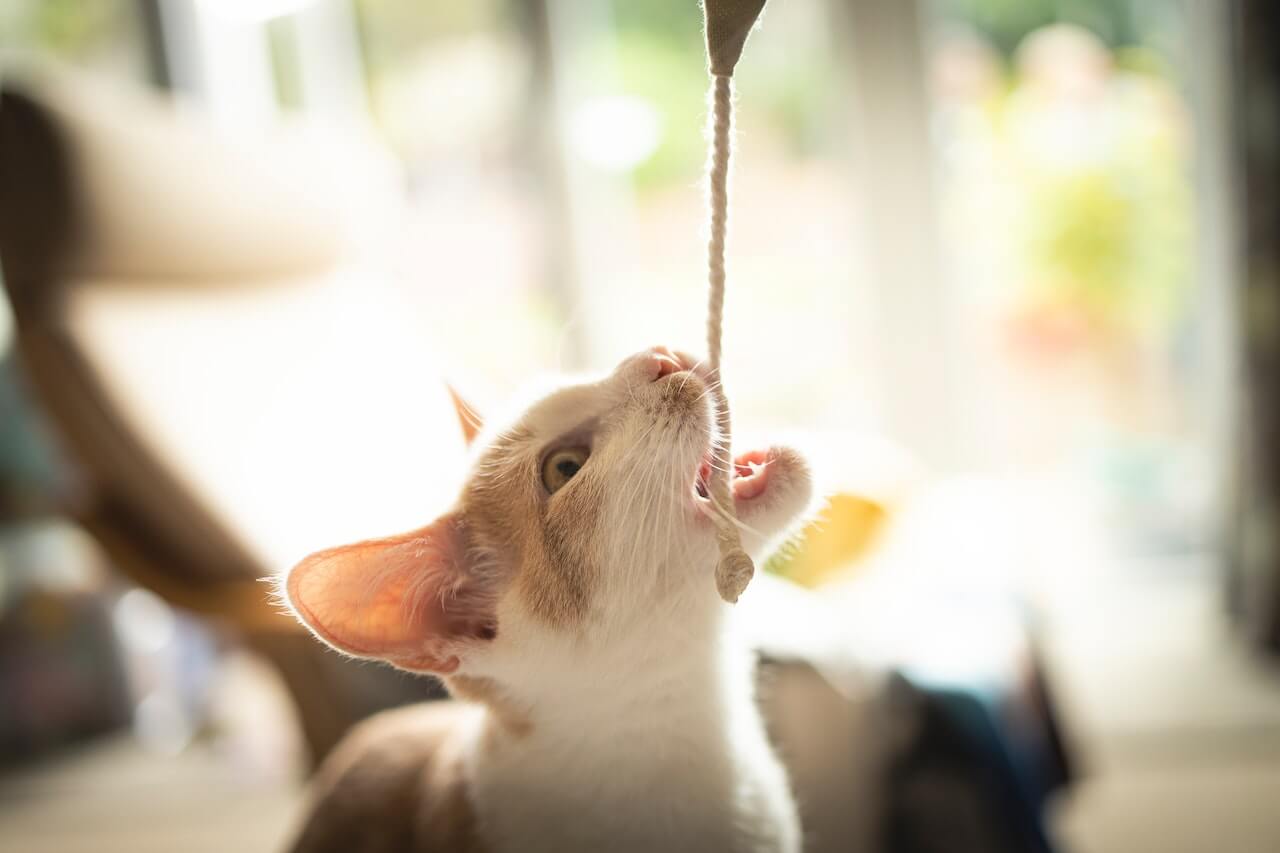The Destructive Cat: Why They Do It and How to Stop It


Are your cat’s antics driving you crazy? From jumping on the kitchen countertops to scratching your furniture, and everything in between- it can feel like nothing is off limits. If so, it’s time to figure out how to get a cat to stop being destructive.
Don’t worry – it’s not mission impossible! With a bit of patience and some smart strategies, you can quickly help them adjust their behavior and keep your home intact.
While cats are naturally curious creatures and sometimes that curiosity can become destructive, there are ways to get a cat to stop being so destructive without resorting to punishment.
Read on to train your cat to become calmer.
Why has my cat become destructive?

If you have a cat who has suddenly become destructive, you’re probably scratching your head wondering why. Don’t worry! Here are five of the most common reasons for a kitty’s behavior switch-up:
1. Hunting instinct:
Many cats display predatory instincts that can lead to destruction; chasing after toys, scratching at furniture and more are all examples of cats “hunting” for prey.
2. Stress:
Just like humans, cats can get stressed out from changes in environment or routine, new people or animals in the house, medical issues and more. How cats express this stress often takes the form of fur chewing or furniture clawing – they’re looking to relieve that tension through physical means.
3. Boredom:
Cats need entertainment just like anyone else! Lack of mental stimulation leads to boredom, which can then manifest in a variety of destructive behaviors.
4. Attention-seeking:
If your cat feels ignored or neglected, they may act out to get the attention they crave.
5. Separation anxiety:
If you’ve recently started leaving your cat home alone for long periods of time, they may express their anxiety through destructive behavior.
How to get a cat to stop being destructive

The key to getting a destructive cat back on track is understanding why they’re behaving this way and addressing the underlying issues.
Here are some of the ways in which you can get a cat to stop being destructive:
1. Spend time with your cat:
If you spend quality time with your furry friend, they will be less likely to act out in destructive ways, such as scratching and biting furniture. Show them that you care by engaging in playtime or activities like brushing their fur – they’ll be sure to appreciate it!
2. Make sure they have toys to keep them occupied:
Cats are curious creatures, so give them plenty of toys that will engage their intellect and provide stimulation. This not only prevents boredom from setting in, but also keeps them busy enough that they won’t feel the need to scratch up your sofa!
3. Know when it’s time for a break:
If you notice your pet getting anxious or agitated, give them a break from the situation. Letting your cat take some time to decompress can help make sure they don’t resort to destructive behaviors.
4. Reinforce positive behavior:
If you catch your pet doing something good, like using their scratching post instead of your couch, reward them with treats or affection! Positive reinforcement is an excellent way to encourage good habits in cats.
5. Offer them a safe space:
Make sure there are places your cat can go if it needs some alone time or just wants to relax away from the hustle and bustle of daily life. This could be a cozy corner in the house, a bed on the balcony, or even just a spot by the window that allows for plenty of sunlight.
6. Establish boundaries:
Cats need boundaries to understand what is acceptable and what isn’t, so make sure you set those up for them early on.
This will help keep the peace in your home and can reduce some of the destructive behavior that cats are known for exhibiting.
7. Make sure they stay active:
Lastly, ensure your cat stays active with plenty of exercise every day. A tired kitty is a content kitty – and one that won’t be tempted to lash out at furniture!
Give your feline friend plenty of time to play, run around, and explore the world outside its window. With the proper stimulation, it won’t feel the need to act out in negative ways.
At what age do cats become less destructive?
As cats get older, they become less destructive and more appreciative of the finer things in life. How old is that?
The answer can vary from cat to cat, but typically we’re looking at around three to four years old when they start to mellow out.
Until then, you’ll have to find creative ways of getting them to stop being destructive.
This could include providing plenty of activities for them – like scratching posts and toys – as well as creating rules and boundaries that show your kitty where it’s OK to explore and where it’s not.
After all, what good is a fine piece of furniture if your cat has already torn it apart?
Which cats are calmer male or female?

The age-old question of whether male or female cats are calmer is still up for debate.
Some people believe that female cats are more docile while others think male cats have a better temperament.
While there’s no clear answer, one thing is certain. Regardless of gender, all cats can become destructive if not trained properly.
Next time you’re wondering which gender of cat is calmer, remember that the real answer lies in how you train and care for them.
Conclusion

Now that you know how to get a cat to stop being destructive, you can enjoy their presence without worrying about your furniture or carpets.
With a few simple tips and tricks, you can help make sure both you and your kitty are living happily ever after.
By following these tips, you can successfully reduce the amount of destructive behavior that your cat exhibits and maintain a peaceful home for everyone!
How do you get your cat to stop being destructive? Let us know in the comments below!



